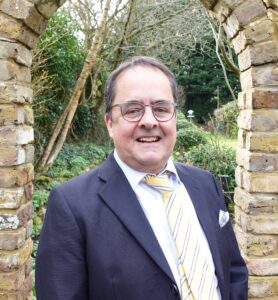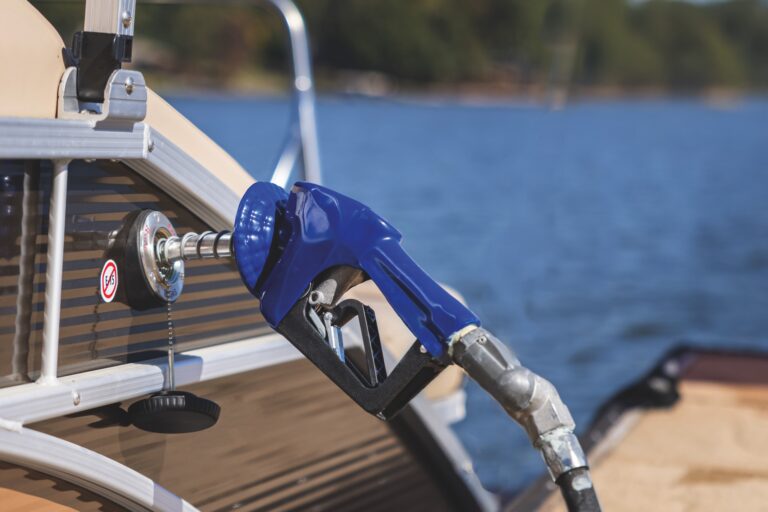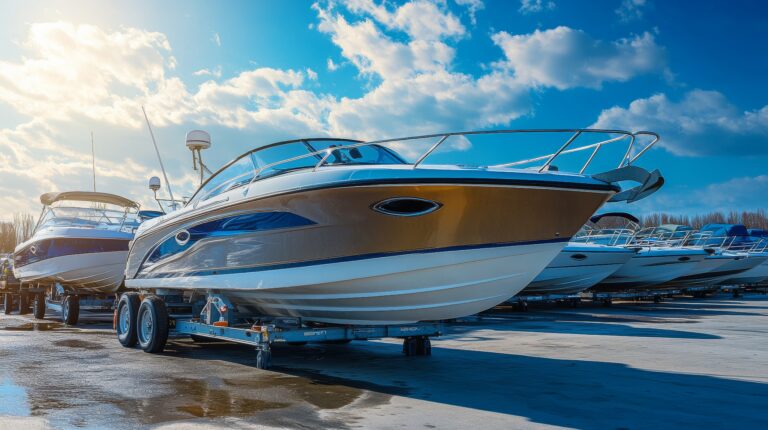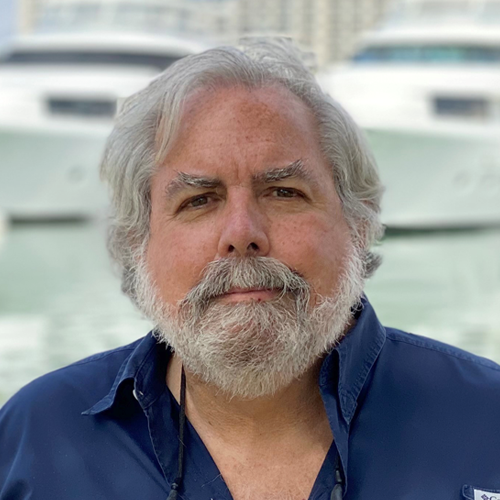West System is a brand name that is synonymous with epoxy. It’s owned by Bay City, Mich.-based Gougeon Brothers, which produces epoxies that are sold all over the world, through licensing agreements with companies in the U.K and Australia.
The company’s history dates to the early 1960s, when fiberglass boatbuilding was rapidly catching on and wooden boatbuilding began its steep decline. The brothers Meade, Joel and Jan Gougeon — who had grown up sailing in the 1950s on Lake Huron’s Saginaw Bay and had built boats on the city’s beach using wood, bronze Anchorfast nails and Weldwood glue — took things to the next level after Jan, at age 14, started apprenticing with Vic Carpenter, an early proponent for boatbuilding with epoxy. He and Meade both tried, and failed, to build wooden boats with epoxy, without fasteners, but they did keep building boats. And Bay City was fortuitously close to The Dow Chemical Company in Midland, Mich., one of the two major base-epoxy suppliers in the United States.
 Courtesy Gougeon Brothers Inc.
Courtesy Gougeon Brothers Inc. As it happened, Herbert Dow, the grandson of the company’s founder, was an avid sailor who one day walked into the Gougeons’ shop to buy two iceboats. When he saw them using epoxy, he connected Meade to Dow’s epoxy chemists.
The Gougeon brothers knew how to use epoxy as an adhesive, but the Dow chemists helped them figure out how to reformulate epoxy with diluents to do exactly what they wanted. Meade became a bench chemist, figuring out how to minimize shrinkage, reduce odor, shorten or lengthen drying times, and use epoxy as a moisture barrier and gap filler. They tried to keep their epoxy recipes secret, but word got out that the Gougeons had figured out how to build a faster, lighter, more resilient wooden boat with epoxy. It didn’t take long before other builders wanted to buy the products the brothers had formulated.
In 1969, Jan and Meade founded Gougeon Brothers Boatworks, and in 1970, they launched their E5, Adagio. It was a 35-foot trimaran and was the first large, all-epoxy bonded and sealed wooden boat built without the use of fasteners. The boat was not just revolutionary in its construction, but it was fast, too, dominating races around the Great Lakes. Adagio was the culmination of much experimentation and many failures. Meade would later say they had “failed their way to success.”
 Courtesy Gougeon Brothers
Courtesy Gougeon BrothersBecause other builders kept coming to them to buy their epoxy products, in 1971, the brothers introduced the West System. (West stood for wood epoxy saturation technique.) The two-part system consisted of a can of resin and a can of hardener with manual pumps to correctly meter the mix. They also marketed microfillers and other products to thicken the epoxy.
Having set up epoxy production facilities, they quickly realized that educating their customers about the proper metering, mixing and application of their product would be their greatest challenge. In 1972, they introduced The West System Technical Manual. They would also publish other manuals, including Wooden Boat Restoration & Repair and Fiberglass Boat Repair and Maintenance.
As they started selling epoxy, their boatbuilding business took off. In 1973, they built the cold-molded, Ron Holland-designed monohull Golden Dazy, which would win the 1975 Canada Cup and prove pound for pound that wood and epoxy hulls could be stiffer and stronger than fiberglass hulls. Sailors and designers knew that Gougeon multihulls and monohulls were capable of beating the fastest boats, and boatyards realized that epoxy was a great product to repair fiberglass boats.
The epoxy business took up so much of the brothers’ time that they had to hire other professionals to meet their boatbuilding obligations. They found themselves constantly giving people technical advice about epoxy construction, so in 1977, they produced the first issue of The Boatbuilder, a newsletter about building and repairing boats with West System epoxy. In 1979, the brothers published a how-to book, The Gougeon Brothers on Boat Construction: Wood and West System Epoxy. It included drawings to explain the West System cold-molded boatbuilding technique. It would spawn a cottage industry of backyard cold-molded boatbuilding.
 Onne Van der Wal
Onne Van der WalBy 1983, the business was on solid footing. The Gougeons wanted to share their good fortune with the people who worked for them and laid the groundwork to make Gougeon Brothers an employee-owned company. They also continued to translate their epoxy-based construction methods to areas outside boatbuilding, even beyond Earth.
In the late 1970s, they manufactured laminated wood specimens for NASA’s Wind Energy Project Office. The samples they created were so strong they broke NASA’s test equipment. In the mid-1980s, they built 65-foot wind turbine blades for Westinghouse. Their blade-building method was later used by the Jon Staudacher Bay City airplane company to build wings for airplanes using West System epoxy.
Gougeon Brothers was transitioning from a boatbuilding company into a chemical company. In 1988, in-house chemists at Gougeon developed GLR/GLH, a laminating epoxy used to cold-mold wind blades for Westinghouse. In 1993, it was decided that the boatbuilding business would be shut down. Soon after, GLR/GLH was rebranded to become an OEM epoxy brand named Pro-Set, which is still a go-to epoxy for professional boatbuilders. The West System continues to be a top epoxy for non-professionals.
 Courtesy Gougeon Brothers
Courtesy Gougeon BrothersGougeon Brothers is still thriving in Bay City. The boat shop is still there, but it’s been absorbed into a much larger facility that includes a technical lab for new-product innovation. A production facility manufactures all the Gougeon Brothers products sold in the Western Hemisphere and Asia. Since 2018, Gougeon Brothers has also produced a bio-based epoxy called Entropy Resins and distributes Pro-Vac vacuum bag consumables.
The West System Technical Manual, renamed the West System User Manual & Product Guide, is now available in 18 languages. The boatbuilder newsletter, renamed Epoxyworks, is in its 47th year of publication with a readership of 80,000. The Gougeon Brothers on Boat Construction has sold more than 100,000 copies and is in its fifth edition. It is used as a textbook at boatbuilding schools around the world.
The company is still family-run. Meade’s daughter Renee takes care of the employee benefits, and her husband, Alan Gurski, serves as CEO. It also remains employee-owned, and as it did when Meade and Jan ran it, the office still closes one business day a year for a golf outing with a picnic and a party in the boat shop.
This article was originally published in the May 2024 issue.










